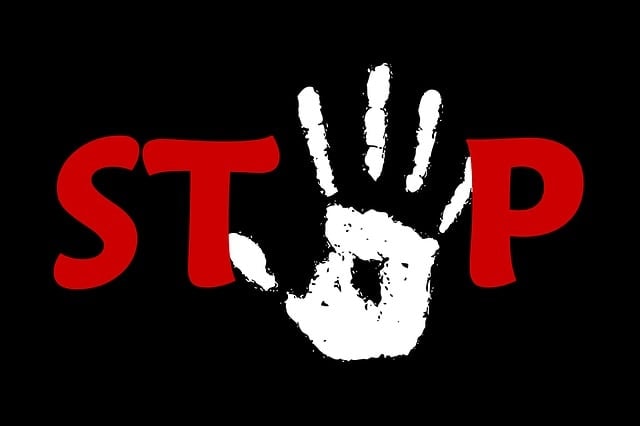Examples of Landlord Harassment: Understanding and Addressing the Issue

Landlord harassment is a serious issue that can significantly impact a tenant’s quality of life and violate their legal rights. The rental agreement is crucial in defining tenant rights and landlord responsibilities, including property maintenance and repair obligations. This comprehensive guide aims to help tenants understand what constitutes harassment, recognize common examples, know their rights, and learn how to address such situations effectively.
What Constitutes Landlord Harassment

Landlord harassment refers to any actions taken by a landlord, property manager, or their representatives that are intended to force a tenant to give up their legal rights or leave the property. These actions are illegal and violate tenant rights protected by local, state, and federal laws.
Tenant harassment can also occur, emphasizing the need for evidence to prove such claims.
Key elements that often define landlord harassment include:
- Intentional actions that interfere with a tenant’s right to quiet enjoyment of their rental unit
- Attempts to force a tenant out of their home without following proper legal eviction procedures
- Retaliation against a tenant for exercising their legal rights
- Creating an uncomfortable or hostile living environment
Types of Landlord Harassment

Landlord harassment can manifest in various ways, each designed to create an uncomfortable living environment or force tenants to leave their rental property. Here are some common types:
- Verbal Abuse: This includes using threatening or intimidating language to scare or annoy tenants. Such behavior can create a hostile living environment and is considered landlord harassment.
- Ignoring Repair Requests: When a landlord fails to address maintenance issues or needed repairs in a timely manner, it can lead to unsafe or unhealthy living conditions.
- Shutting Off Utilities: Cutting off essential services like heat, electricity, or water to force tenants out is a severe form of harassment and is illegal.
- Repeatedly Entering the Rental Unit Without Notice: Entering the tenant’s unit without proper notice or permission violates the tenant’s right to privacy and is considered harassment.
- Using Threatening Language or Behavior: Making threats or using physical intimidation to force tenants to vacate is not only harassment but can also be criminal.
- Refusing to Provide Necessary Repairs or Maintenance: Failing to maintain the rental property can lead to deteriorating living conditions, which is a form of harassment.
- Threatening Eviction Without Cause: Threatening to evict tenants without a valid reason or following proper eviction procedures is a common harassment tactic.
- Repeatedly Disturbing the Tenant’s Peace and Quiet: Engaging in behavior that disrupts the tenant’s right to quiet enjoyment of the rental property is another form of harassment.
Common Examples of Landlord Harassment

Landlord harassment can take many forms. Here are some common examples:
- Illegal entry: Entering the tenant’s unit without proper notice or consent
- Utility interference: Shutting off or threatening to shut off essential services like water, electricity, or heat
- Neglecting repairs: Ignoring or delaying necessary maintenance and repair requests
- Verbal abuse: Making threats, using intimidating language, or engaging in verbal confrontations
- Rent manipulation: Refusing to accept rent payments to create grounds for eviction
- Privacy violations: Installing cameras or other surveillance devices without tenant consent
- Constant communication: Excessive calls, texts, or visits under the guise of property management
- Misuse of legal processes: Filing baseless lawsuits or making false accusations against the tenant
- Discriminatory behavior: Targeting tenants based on protected characteristics (race, gender, religion, etc.)
- Removing amenities: Taking away parking spaces, storage areas, or other promised amenities without justification
Normal Actions That Are Not Considered Landlord Harassment

It’s important to distinguish between legitimate landlord actions and harassment. Here are some normal actions that are not considered landlord harassment:
- Conducting Scheduled Inspections: Landlords have the right to regularly inspect the rental property to ensure it is being maintained and to identify any needed repairs. These inspections should be scheduled with proper notice.
- Performing Maintenance Tasks: Completing necessary repairs and maintenance to keep the rental property safe and habitable is a landlord’s responsibility and not harassment.
- Issuing Rent Increases: Raising rent with proper notice and in accordance with local laws and regulations is a legitimate action and not considered harassment.
- Filing a Legal Eviction: Evicting a tenant for a valid reason, such as non-payment of rent or violation of the lease agreement, and following proper eviction procedures is within a landlord’s rights.
- Changing Locks in Cases of Domestic Violence: Changing locks to protect a tenant who is a victim of domestic violence is a protective measure and not harassment.
Legal Protections for Tenants

Tenants are protected by various laws at different levels:
- Federal Laws:
- Fair Housing Act: Prohibits discrimination in housing
- Civil Rights Act: Protects against racial discrimination
- State Laws:
- Landlord-Tenant Acts: Outline rights and responsibilities of both parties
- State-specific anti-harassment statutes
- Local Laws:
- City or county ordinances often provide additional protections
- Some cities have specific anti-harassment laws for tenants
Key legal protections often include:
- Right to quiet enjoyment of the property
- Protection against illegal eviction
- Right to a habitable living space
- Protection against retaliation for exercising legal rights
- Right to privacy and proper notice before landlord entry
How to Document and Prove Landlord Harassment

Proper documentation is crucial if you’re experiencing landlord harassment:
- Keep a detailed log of all incidents, including dates, times, and descriptions
- Save all communications (emails, texts, voicemails) from your landlord
- Take photos or videos of any physical evidence of harassment
- Get statements from witnesses, if possible
- Report incidents to local authorities and keep copies of police reports
- Maintain records of any financial losses or expenses related to the harassment
Steps to Take if You’re Being Harassed

If you believe you’re experiencing landlord harassment:
- Communicate in writing: Ask your landlord to stop the harassing behavior in a clear, written statement
- Know your rights: Familiarize yourself with local tenant protection laws
- Report violations: Contact your local housing authority or tenant rights organization
- Seek mediation: Some communities offer landlord-tenant mediation services
- Consider legal action: Consult with a tenant rights attorney about your options
- Don’t withhold rent: Continue to pay rent unless advised otherwise by a lawyer
- Stay calm: Avoid escalating conflicts with your landlord
Reporting Landlord Harassment

If you are experiencing landlord harassment, there are several steps you can take to report it:
- Document the Harassment: Keep a detailed record of all incidents, including dates, times, and descriptions of what happened. This documentation is crucial in proving landlord harassment.
- Review Your Lease Agreement: Check your lease to see if it includes any provisions related to harassment or dispute resolution. Understanding your lease agreement can help you identify violations.
- Communicate with Your Landlord: Try to resolve the issue by communicating with your landlord in writing. Clearly state the harassment and request that it stops.
- File a Formal Complaint: Report the harassment to your local housing authority or file a complaint with a government agency. They can investigate and take action if necessary.
- Seek Legal Advice: Consult with a lawyer who specializes in tenant rights to discuss your options and determine the best course of action. Legal advice can help you navigate the complexities of landlord harassment cases.
Seeking Legal Assistance

When to consider legal help:
- If the harassment persists after you’ve asked the landlord to stop
- If you’re facing illegal eviction attempts
- If you’ve suffered financial losses due to the harassment
- If you feel unsafe in your home due to the landlord’s actions
How to find legal assistance:
- Contact local legal aid organizations
- Reach out to tenant rights groups in your area
- Consult with a private attorney specializing in landlord-tenant law
- Check if your city or state has a tenant legal assistance program
Potential Legal Consequences for Landlords
Landlords who engage in harassment may face:
- Civil lawsuits from tenants
- Fines and penalties from local housing authorities
- Criminal charges in severe cases
- Damage to their reputation and difficulty renting to future tenants
- Revocation of rental licenses or permits
Landlord Retaliation

Landlord retaliation occurs when a landlord takes adverse action against a tenant for asserting their rights or reporting harassment. Examples of landlord retaliation include:
- Evicting a Tenant for Reporting Harassment: If a tenant files a complaint or reports harassment, the landlord may attempt to evict them in retaliation.
- Raising Rent or Changing Lease Terms: In response to a tenant’s complaint, a landlord might increase the rent or alter the lease terms unfairly.
- Reducing Services or Amenities: A landlord might cut back on services or amenities that were previously provided as a form of retaliation.
- Engaging in Further Harassment or Intimidation: Continuing or escalating harassing behavior after a tenant has made a complaint is a clear sign of retaliation.
Preventing Landlord Harassment

For tenants:
- Understand your lease agreement thoroughly
- Keep all communications and transactions with your landlord in writing
- Be aware of your rights and local tenant protection laws
- Join or form tenant associations for collective support
For landlords:
- Educate yourself on landlord-tenant laws
- Maintain clear, professional communication with tenants
- Follow proper legal procedures for all landlord-tenant matters
- Address maintenance issues promptly
- Respect tenants’ rights to privacy and quiet enjoyment
Resources for Tenants
- Local housing authorities
- Tenant rights organizations
- Legal aid societies
- Fair housing agencies
- State attorney general’s office
- U.S. Department of Housing and Urban Development (HUD)
Remember, no tenant should have to endure harassment. If you’re experiencing issues with your landlord, don’t hesitate to seek help and assert your rights.
FAQs
- How can I prove landlord harassment?
- To prove landlord harassment, you will need to document all incidents, including dates, times, and details of what happened. Gathering evidence such as witness statements, photos, and saved communications can strengthen your case.
- Can I withhold rent if my landlord is harassing me?
- Withholding rent can be risky and may not be the best course of action. It is generally recommended to seek legal advice before withholding rent to avoid potential legal repercussions.
- Can a tenant call the police for landlord harassment?
- Yes, if you feel that you are in immediate danger or if the harassment involves criminal behavior, you can call the police. They can provide immediate assistance and create an official record of the incident.
- What is considered landlord harassment in California?
- In California, landlord harassment includes actions like deliberately failing to provide required repairs or maintenance, threats of eviction without cause, repeatedly disturbing the tenant’s peace and quiet, intentionally providing services at an inadequate level, and any behavior intended to force the tenant to leave their apartment or waive their rights.
- What is compensation for landlord harassment?
- Compensation for landlord harassment may include monetary damages for emotional distress or physical inconvenience, punitive damages in extreme cases, legal fees if the tenant is successful in a lawsuit, and sometimes, compensation can also include rent reduction or lease termination.
Related Terms: Tenant violates, sexual harassment, property owners, notice landlords, tenant’s legal fees













